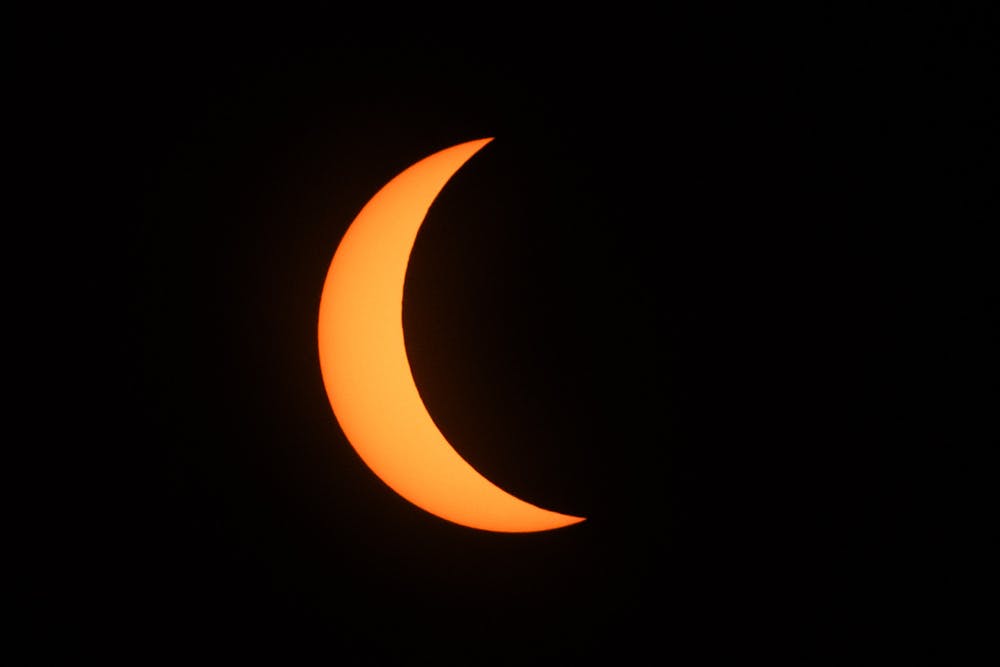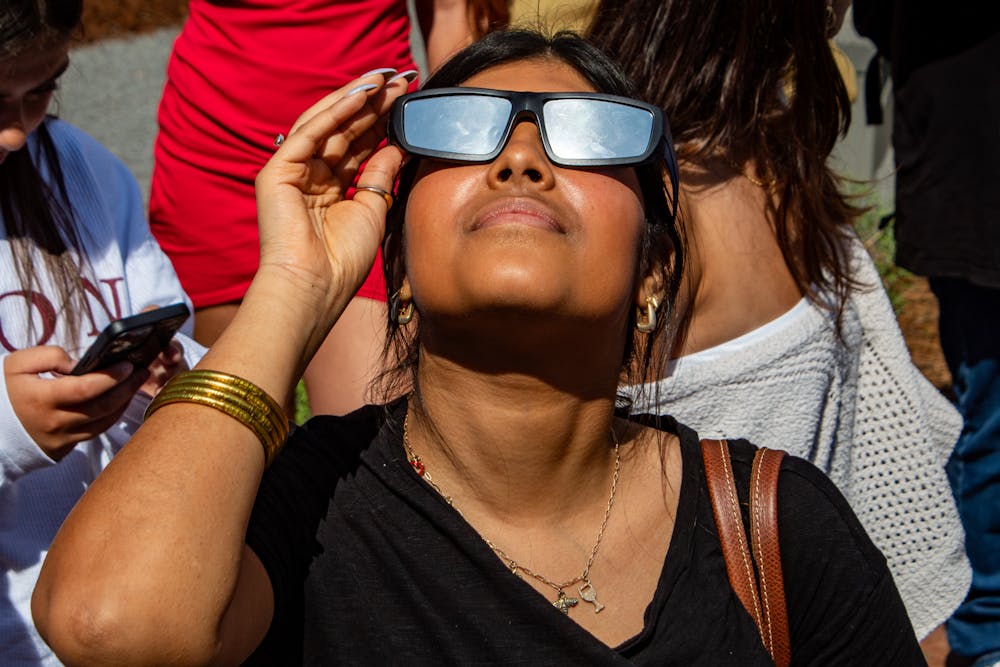Updated as of 5:36 p.m. on April 9 to include video of the eclipse from Elon University's campus.
On the afternoon of April 8, a rare total solar eclipse – referred to by some as the “Great North American Eclipse” — traveled over parts of Mexico, the United States and Canada – blanketing parts of North America located in the “path of totality” in a brief period of darkness. While Elon and central North Carolina were not situated in the area for the total eclipse, the region did experience a partial eclipse.
The Elon University Physics Department held an eclipse watching event at the Innovation Quad between 2 and 4 p.m., where roughly 500 people showed up at the moment of partial totality.

The partial solar eclipse is seen over Elon on April 8, just after a partial totality of roughly 81%.
At the event, a total of 500 pairs of eclipse glasses were given away by the university. Viewing the sun during the eclipse required special glasses due to potential eye damage from looking directly at the event. The department ran out of glasses before 3 p.m.
While not a total eclipse, Claudine Moreau, an Elon lecturer in physics, said she believes that the partial eclipse was still a significant event.
“I went to see the 2017 eclipse in Clemson, South Carolina to see totality. And there's nothing quite like totality. But most of us who have jobs and school to go to — we weren't able to do that,” Moreau said. “The next best thing is to put on a pair of protective glasses and look up because when you're talking about an 81% eclipse, that's still pretty significant to witness.”
While some areas of the U.S. under the eclipse were blocked by cloud cover, central North Carolina only had partly cloudy skies, with Elon getting a clear view of the partial totality.

Elon University President Connie Book watches the partial solar eclipse on April 8 in front of Founders Hall.
For freshman Matthew Rieck, the forecast was not a concern.
“When we were setting up there were clouds covering the sun,” Rieck said. “I never really got worried.”
The next total solar eclipses to occur in the continental U.S. will not occur until 2044, while the next total solar eclipse to occur across a wide range of the U.S. will occur in 2045.
“It's stranger than anything that's ever been written in science fiction because it all makes sense,” Rieck said. “The moon is moving, the earth is moving to make a solar eclipse happen – that's incredible because everything has to work as you'd expect it to, at least from our perspective of science and physics.”


